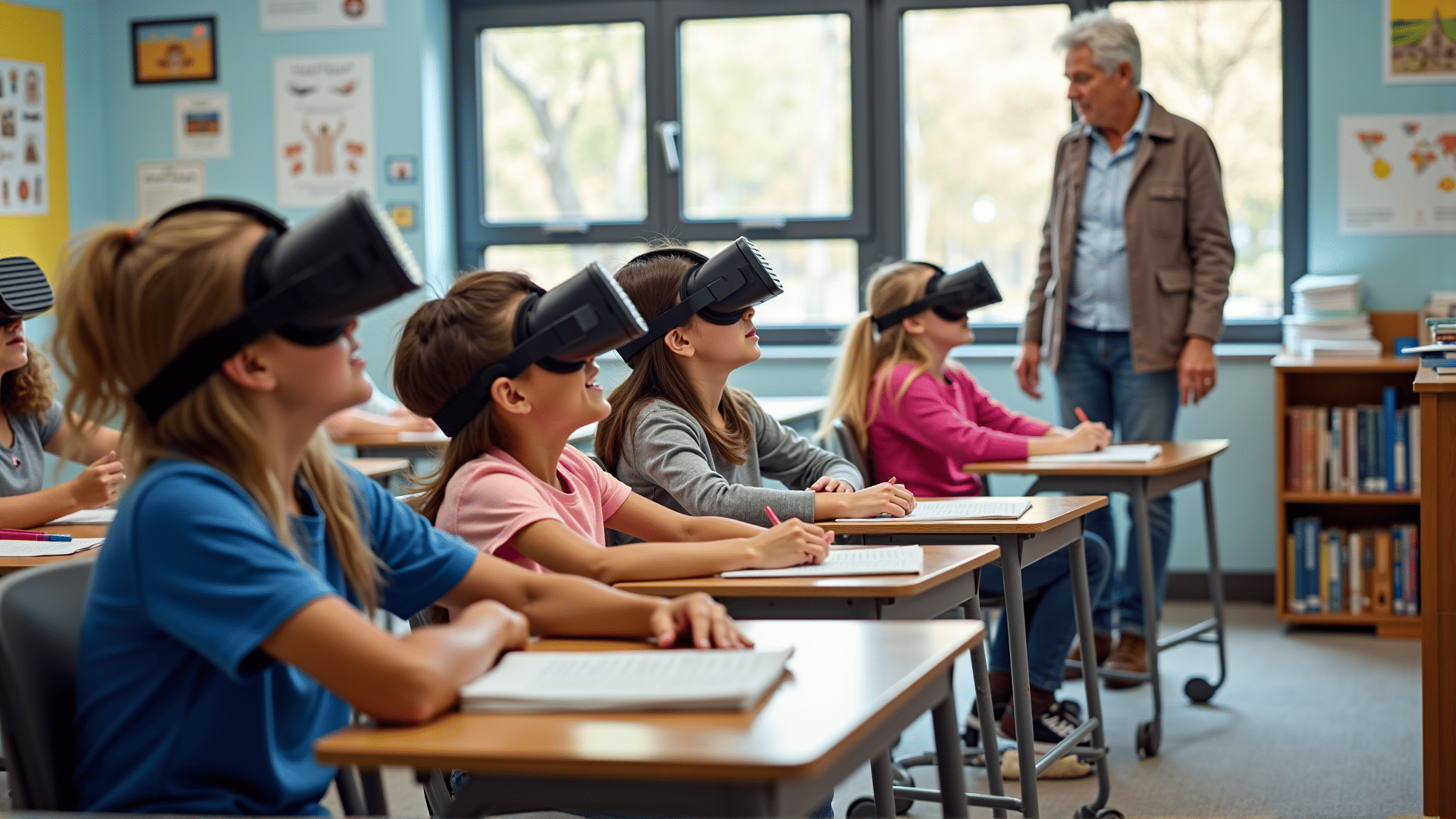Virtual reality (VR) is rapidly transforming the landscape of education, introducing a new frontier in classroom learning. Gone are the days when students were limited to textbooks and static images; today, VR allows students to step inside the pages and experience education in an immersive, interactive environment. This technological advancement not only enhances understanding but also fosters engagement, creativity, and critical thinking.
One of the most significant impacts of VR in education is its ability to provide immersive learning experiences that traditional methods cannot match. Virtual reality creates a 360-degree environment where students can explore complex subjects in depth. For instance, a history lesson about Ancient Rome can become a journey through time where students walk through Roman streets, witnessing events as they unfold. This kind of experiential learning significantly boosts retention rates and helps students to better grasp complex concepts.
Moreover, VR breaks geographic and physical limitations, opening doors to a global classroom. Students can tour world-famous museums, explore distant planets, or learn about ecosystems firsthand, without leaving their classroom. This level of access to the world enriches students' perspectives and stimulates their curiosity, making learning an exciting and personal journey.
In fields such as science and medicine, VR holds exceptional promise. It allows students to conduct experiments without the constraints of physical labs or safety concerns. Medical students, for instance, can perform virtual surgeries, gaining hands-on experience with no real-world consequences. This practical application of knowledge is invaluable, providing learners with crucial operational skills and confidence before they apply their skills in real-life scenarios.
Furthermore, VR fosters inclusivity and personalized learning. Students with different learning styles or disabilities often face challenges in conventional classroom settings. However, VR can be tailored to suit individual needs, offering alternate methods of engagement. For example, a student with dyslexia might benefit from a VR environment that uses auditory processing, turning a potential barrier into an opportunity for success.
Another intriguing aspect of VR in classrooms is its ability to encourage collaboration and teamwork. Many VR applications involve multiplayer scenarios where students must work together to solve problems, build projects, or explore environments. This collaborative learning mirrors real-world situations, equipping students with essential life skills such as communication, empathy, and problem-solving.
Moreover, VR encourages creative expression in students. Art and design students can experiment with virtual canvases, unrestricted by physical materials. This freedom to create in a boundless virtual space inspires innovation and allows for unique, sometimes groundbreaking artistic expressions.
Despite its numerous advantages, the integration of VR in education also poses challenges that educators must address. The cost of VR equipment and software can be prohibitive, though prices are gradually decreasing. Additionally, teachers require training to effectively incorporate VR into their lesson plans, and ensuring equity in access remains a critical concern.
Moreover, the plethora of virtual content available necessitates careful curation to ensure educational value and age-appropriateness. Schools must also balance screen time, ensuring that VR complements rather than replaces traditional learning methods.
In conclusion, the impact of virtual reality in classrooms is profound and transformative, heralding a new era of educational possibilities. By offering immersive experiences, breaking barriers to access, supporting diverse learning needs, and encouraging creativity and collaboration, VR has the potential to fundamentally enhance the way students learn and interact with the world. As technology continues to evolve, educators and policymakers must work together to harness its potential, creating an enriching, inclusive educational landscape for future generations.
